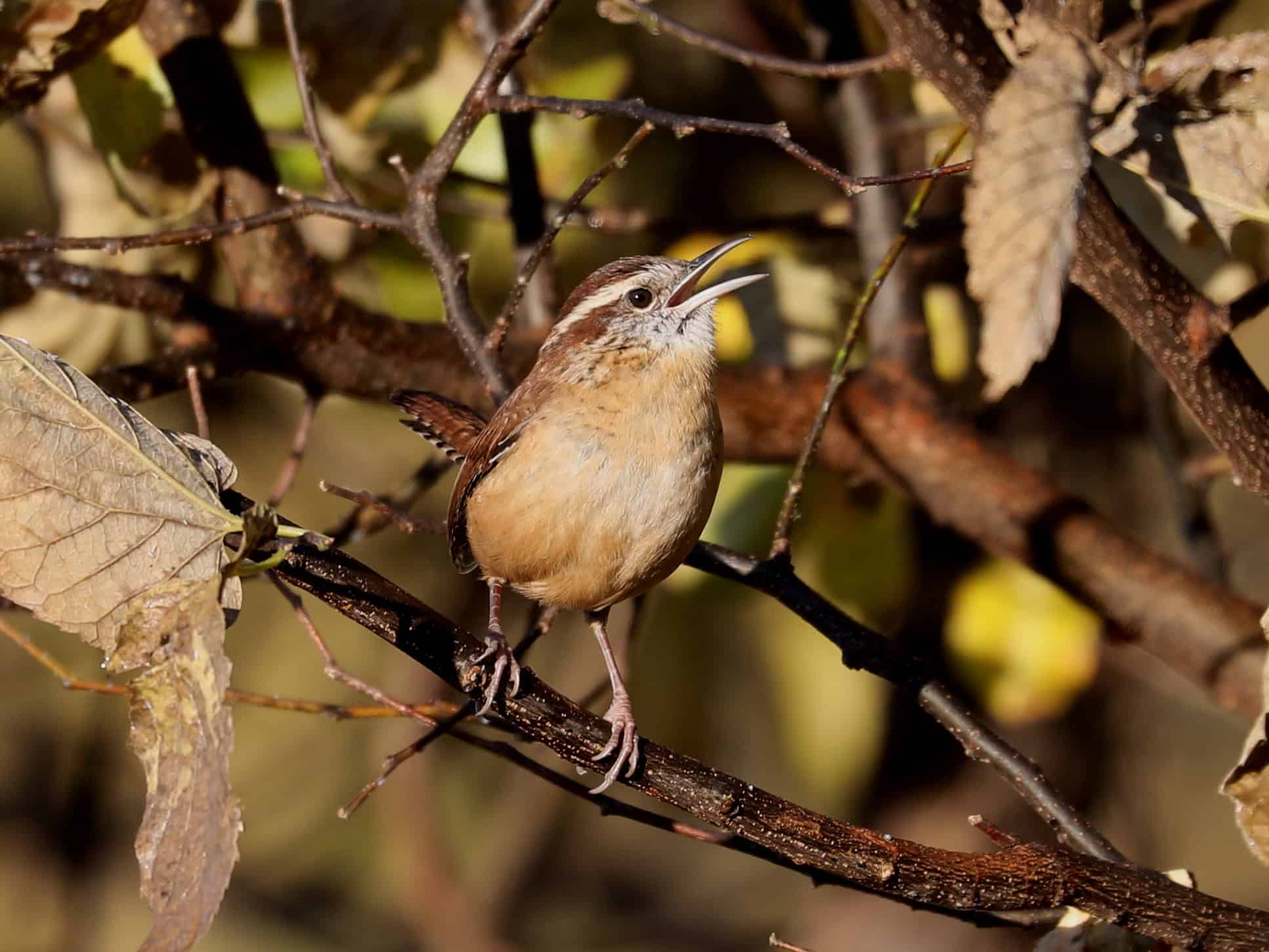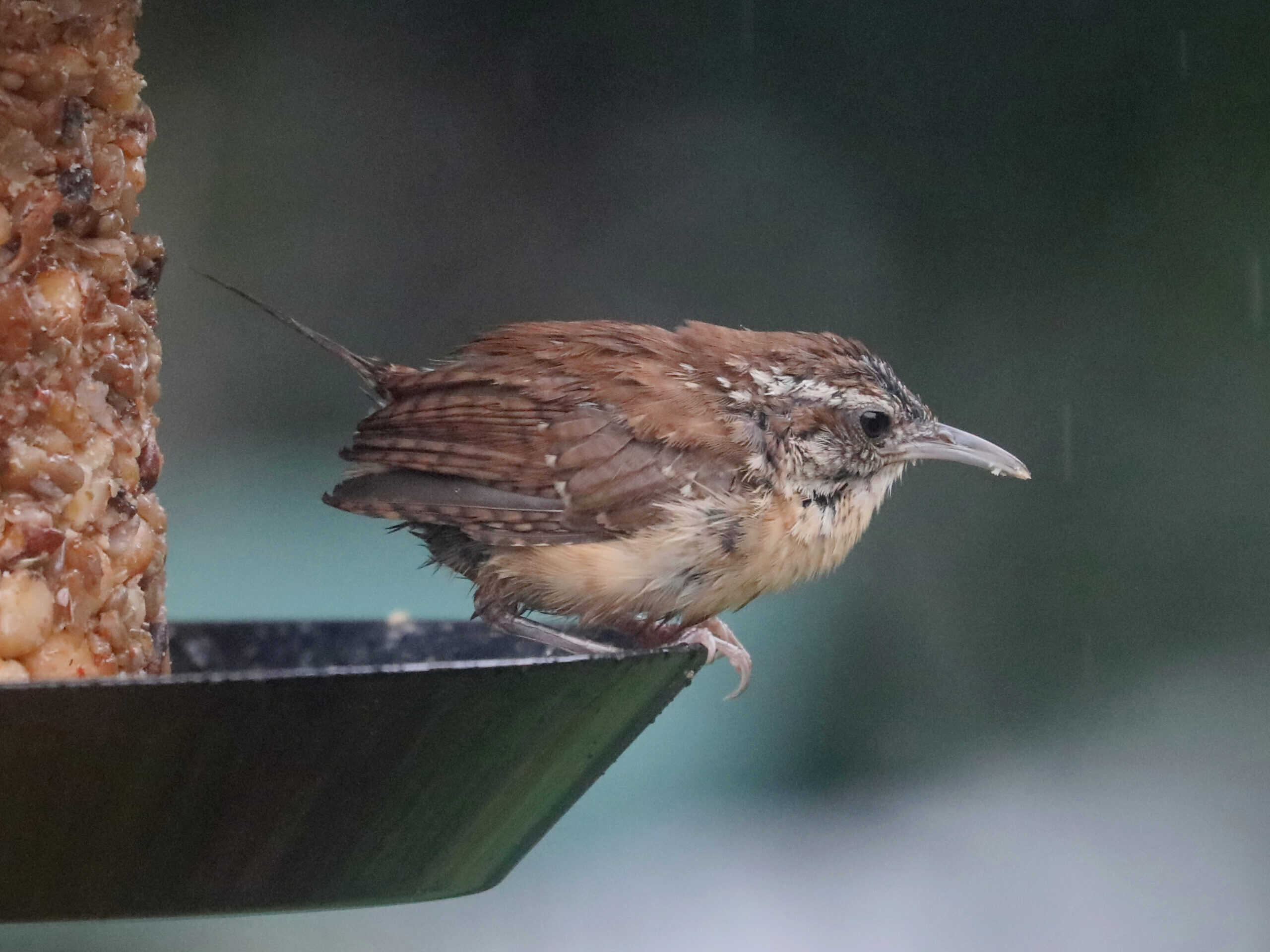Tea-kettle Tea-kettle Tea-kettle: Carolina Wren
Small and sneaky, but very noisy, the Carolina Wren is the most common wren in the Susquehanna Valley. Their loud songs and calls are a year-round part of the chorus of nature sounds in your yard. I recognize their song as sounding like a loud “tea-kettle tea-kettle tea-kettle,” although in my sons’ science class they learned it as “cheeseburger cheeseburger cheeseburger.” In addition to their classic song, Carolina Wrens have a diverse repertoire of chattering calls, clicks, and whistles.
Carolina Wrens are non-migratory, so the wrens you see in your yard this winter are likely the same birds that nested in your neighborhood a few months ago. Male Carolina Wrens defend a nesting territory year-round, and often remain paired with the same female for many years. They’re social little birds and often chatter to each other throughout the day. Males and females look very similar, but males are slightly larger, with thicker legs and a longer bill.
Two other species of wrens are common in backyards in Pennsylvania, the Northern House Wren and the Winter Wren. You can tell Carolina Wrens apart from those other wrens by its size – it’s substantially larger – and by the bold white stripe of feathers above each eye. The other two species of wrens migrate. Northern House Wrens are common in the Susquehanna Valley from mid-April to mid-October. Look for Winter Wrens between early October and early April.
Carolina Wrens are the most likely of our wrens to visit bird feeders. They love mealworms, Bark Butter, Bark Butter Bits, suet, fruit, and seeds with no shells. The wren in the photo below was enjoying a Hot Pepper No-Mess Seed cylinder in my backyard on a rainy day last fall.
Tea-kettle Tea-kettle Tea-kettle: Carolina Wren
Small and sneaky, but very noisy, the Carolina Wren is the most common wren in the Susquehanna Valley. Their loud songs and calls are a year-round part of the chorus of nature sounds in your yard. I recognize their song as sounding like a loud “tea-kettle tea-kettle tea-kettle,” although in my sons’ science class they learned it as “cheeseburger cheeseburger cheeseburger.” In addition to their classic song, Carolina Wrens have a diverse repertoire of chattering calls, clicks, and whistles.
Carolina Wrens are non-migratory, so the wrens you see in your yard this winter are likely the same birds that nested in your neighborhood a few months ago. Male Carolina Wrens defend a nesting territory year-round, and often remain paired with the same female for many years. They’re social little birds and often chatter to each other throughout the day. Males and females look very similar, but males are slightly larger, with thicker legs and a longer bill.
Two other species of wrens are common in backyards in Pennsylvania, the Northern House Wren and the Winter Wren. You can tell Carolina Wrens apart from those other wrens by its size – it’s substantially larger – and by the bold white stripe of feathers above each eye. The other two species of wrens migrate. Northern House Wrens are common in the Susquehanna Valley from mid-April to mid-October. Look for Winter Wrens between early October and early April.
Carolina Wrens are the most likely of our wrens to visit bird feeders. They love mealworms, Bark Butter, Bark Butter Bits, suet, fruit, and seeds with no shells. The wren in the photo below was enjoying a Hot Pepper No-Mess Seed cylinder in my backyard on a rainy day last fall.
About The Author
Dan Hinnebusch is the Ornithologist for Wild Birds Unlimited. Click to learn more.





